29 Mar Reef aquarium lighting, LED lights, NEON and HQI lamps, differences
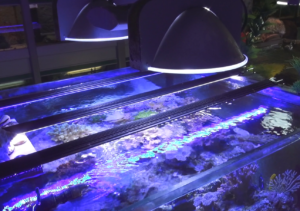 As we all know the light is essential for animals and plants life (photosynthesis) and the choices that we find on the market concern on, metal halide bulbs HQI , linear fluorescent tube T8 or T5 NEON, or LED lights. Before explaning the main differences and out how to use them, you have to know that thanks to the light, you realize all the chemical reactions that allow both the recycling of nutrients, such as the development of zooxanthellae and phytoplankton, and the development of photosynthetic corals, invertebrates and fishes.
As we all know the light is essential for animals and plants life (photosynthesis) and the choices that we find on the market concern on, metal halide bulbs HQI , linear fluorescent tube T8 or T5 NEON, or LED lights. Before explaning the main differences and out how to use them, you have to know that thanks to the light, you realize all the chemical reactions that allow both the recycling of nutrients, such as the development of zooxanthellae and phytoplankton, and the development of photosynthetic corals, invertebrates and fishes.
Most of the corals in our aquariums, live in the wild at depths ranging from a few meters, SPS at about 30 cm to 5 meters, LPS from 5 to 10 mt and soft corals to 15 – 20 meters where the kelvin temperature color scale depending on the depth. In our tanks instead they live at depths between 5 and 50 cm, so we must to manage and calculate the various color scale and the various heights to which the corals will be placed.
Let me explain, the solar color temperature which in nature is around 5500 ° kelvin, but in our tanks will give a yellowish effect too, must be chosen based on the type you’ll breed in the aquarium, for example if you breed a reef aquarium, you must adopt a shade slightly and cold blue of about 10000° K, making the look of natural barrier. If I want to play a reef that goes about 15 meters deep you will adopt lamps that develop 14000° or 20000° Kelvin.

For the amount of light somminister, we can say that the adeguate poweris about 1 watt/1 liter but if we want to breed, just fish and soft corals, we can attest to a modest amount of light, 0.5 watts / liter. For large polyp stony corals a medium quantity, and for small polyp stony corals instead a large amount.
Photoperiod: turn-on the lamps from 8 to 10 hours a day. The start on and off should be gradual to simulate as much as possible the effect sunrise / sunset, is generally done through special units, especially with LED lights. Another useful thing for many animals is the moonlight, characterized by a dark blue color, is important for some invertebrates that base their reproductive cycle on lunar phases, still allow us to observe our aquarium even at night and exalt the corals and fishes fluorescence.
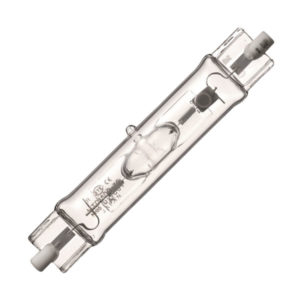
HQI metal halide lamps: now the older generation, cost not very high, but unfortunately for their poor energy efficiency have a very high power consumption, also a lot of heat irradiation of water surface, which in winter can be an advantage, but not in summer. They must be changed one time for year.
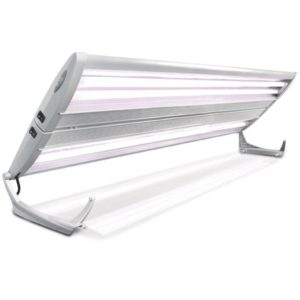
NEON lamps T5 or T8, PL: can be a viable alternative to metal halide because consume slightly less even if their energy efficiency is not optimal, they also raise temperature of water, and must be combined to have certain light spectrums , they have a very low price to buy, but unfortunately have to be changed 1 time every 6 months.
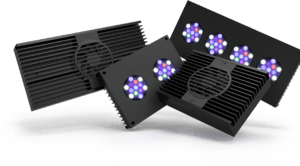 LED lights: they represent a large initial investment (even up to 2000 euro) but they have an excellent luminous efficiency, as electricity consumption will be very low and will not increase the temperature of water. Led can exalt fluorescent colors of coral and are generally already combined for all possible spectra and kelvin degrees, often have control units that reproduce sunrise, sunset and moon phases, and once acquired, if of good quality, you dont need to change. The efficiency and durability depend on the cooling of the LED, more it will be cooled and life will be longer.
LED lights: they represent a large initial investment (even up to 2000 euro) but they have an excellent luminous efficiency, as electricity consumption will be very low and will not increase the temperature of water. Led can exalt fluorescent colors of coral and are generally already combined for all possible spectra and kelvin degrees, often have control units that reproduce sunrise, sunset and moon phases, and once acquired, if of good quality, you dont need to change. The efficiency and durability depend on the cooling of the LED, more it will be cooled and life will be longer.
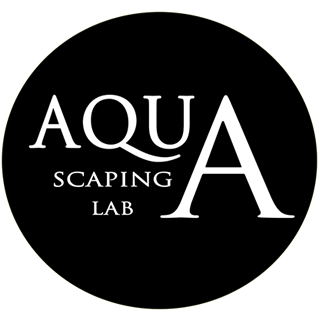


 English
English Italiano
Italiano